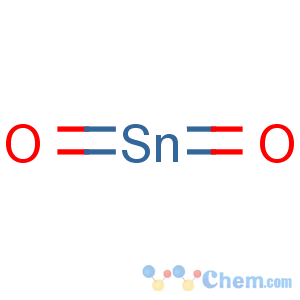Title: Stannic Oxide
CAS Registry Number: 18282-10-5
Synonyms: White tin oxide; tin dioxide; stannic anhydride; flowers of tin
Molecular Formula: O2Sn
Molecular Weight: 150.71
Percent Composition: O 21.23%, Sn 78.77%
Line Formula: SnO2
Literature References: Occurs in nature as the mineral
cassiterite. The commercial grade is also known as
polishing powder,
putty powder, or
tin ash. Review of toxicology and human exposure:
Toxicological Profile for Tin (PB2006-100006, 2005) 426 pp.
Properties: White or slightly gray powder. d 6.95. Insol in water, alcohol, or cold acids. Slowly sol in hot concd potassium or sodium hydroxide soln.
Density: d 6.95
CAUTION: Potential symptoms of overexposure are stannosis (benign pneumoconiosis); dyspnea, decreased pulmonary function.
See NIOSH Pocket Guide to Chemical Hazards (DHHS/NIOSH 97-140, 1997) p 308.
Use: Polishing glass and metals; manuf milk-colored, ruby and alabaster glass, enamels, pottery, putty; mordant in printing and dyeing fabrics; in fingernail polishes.

